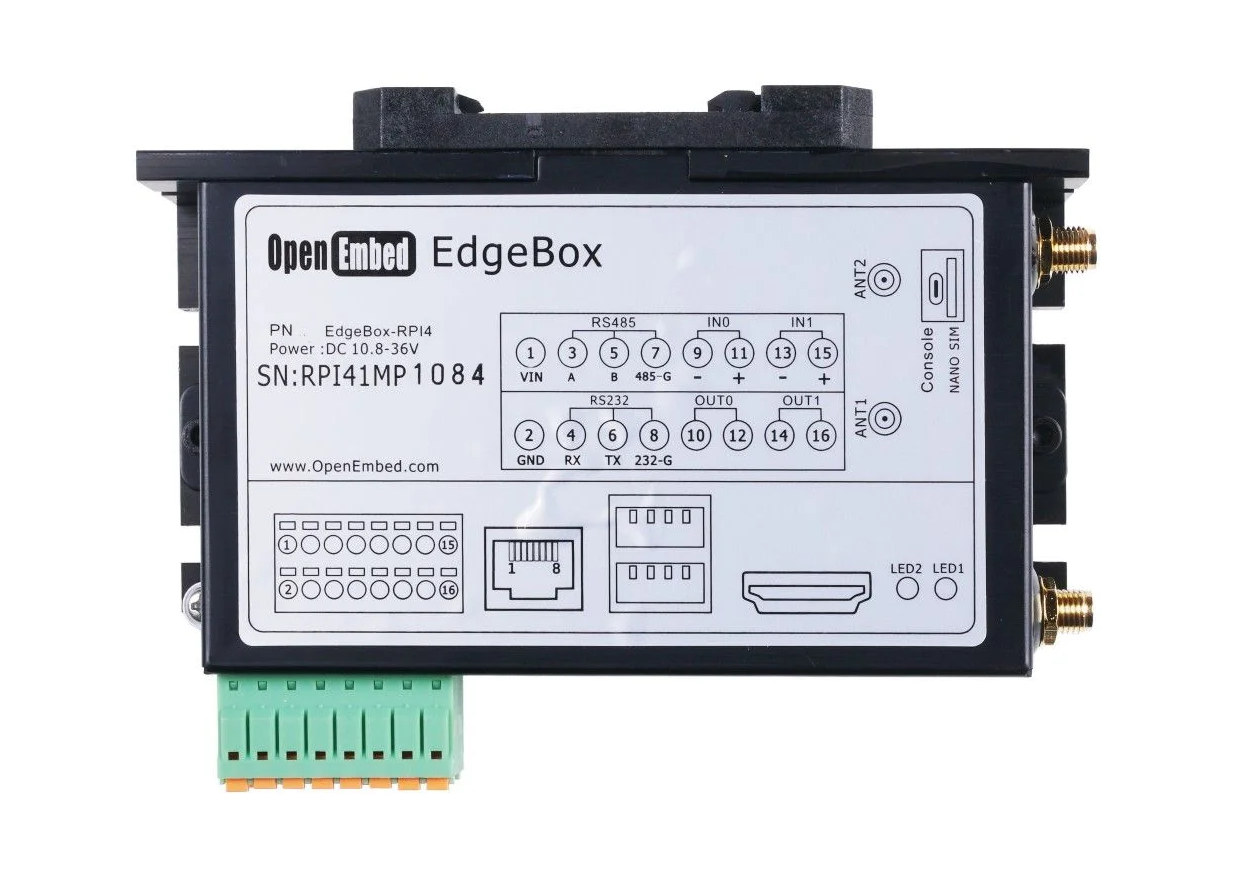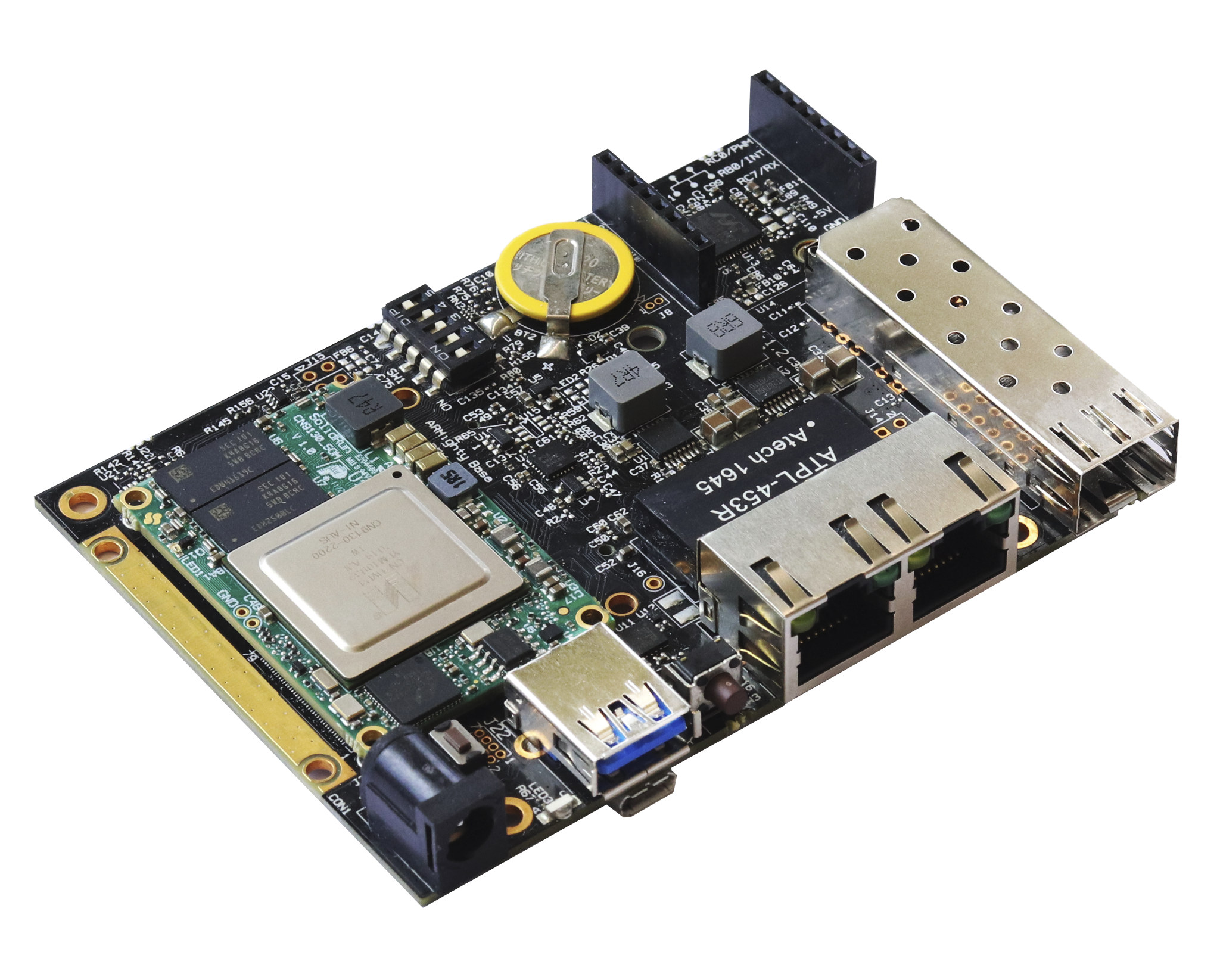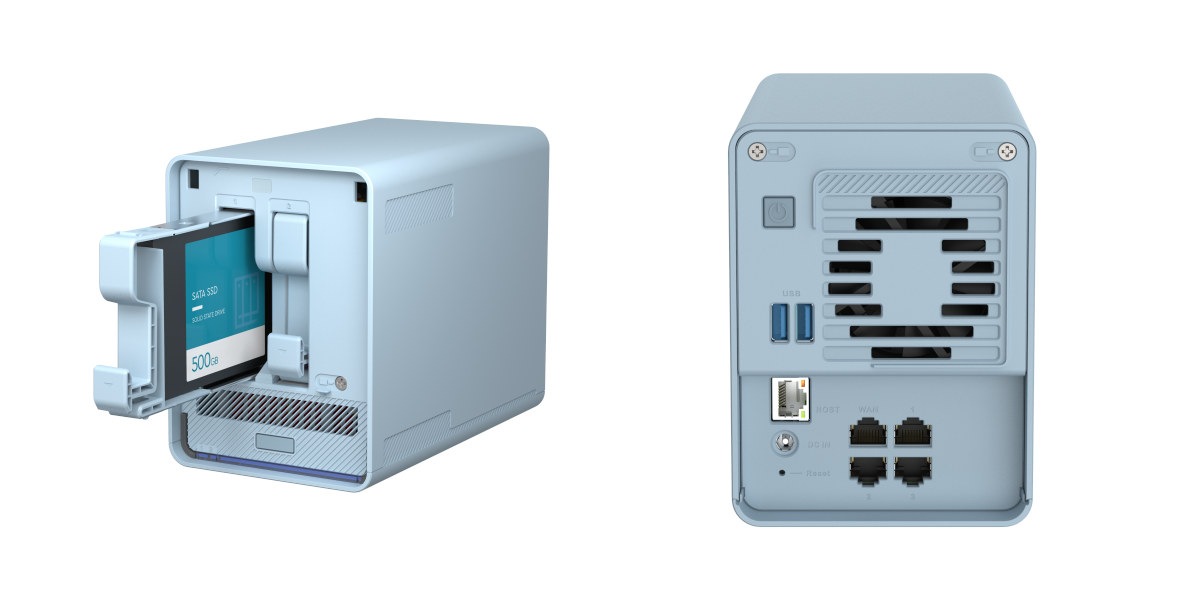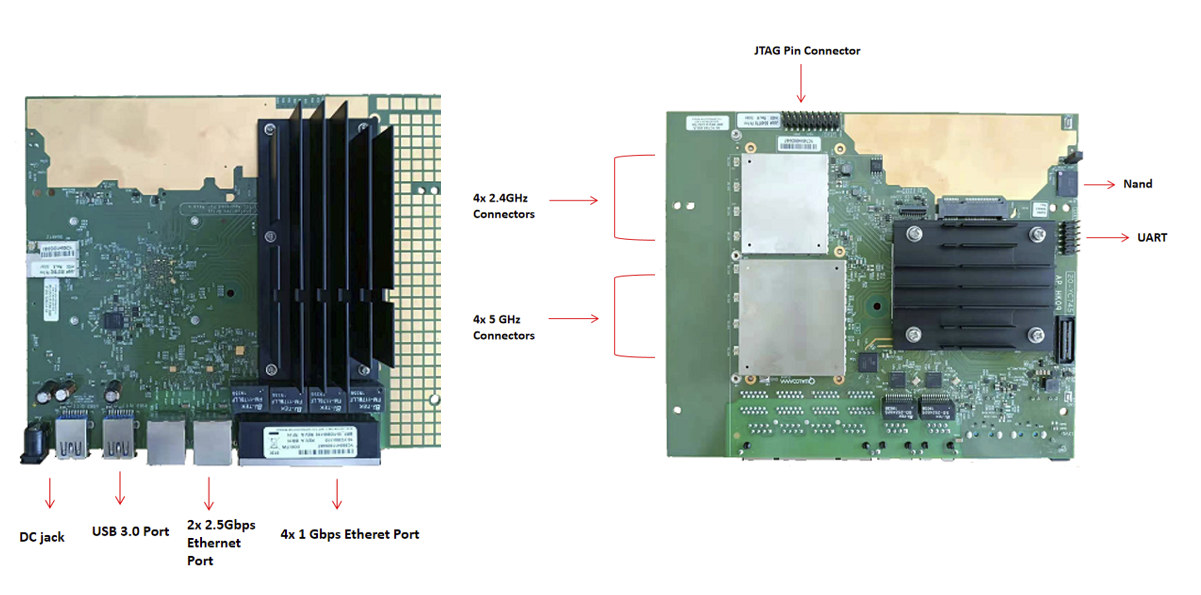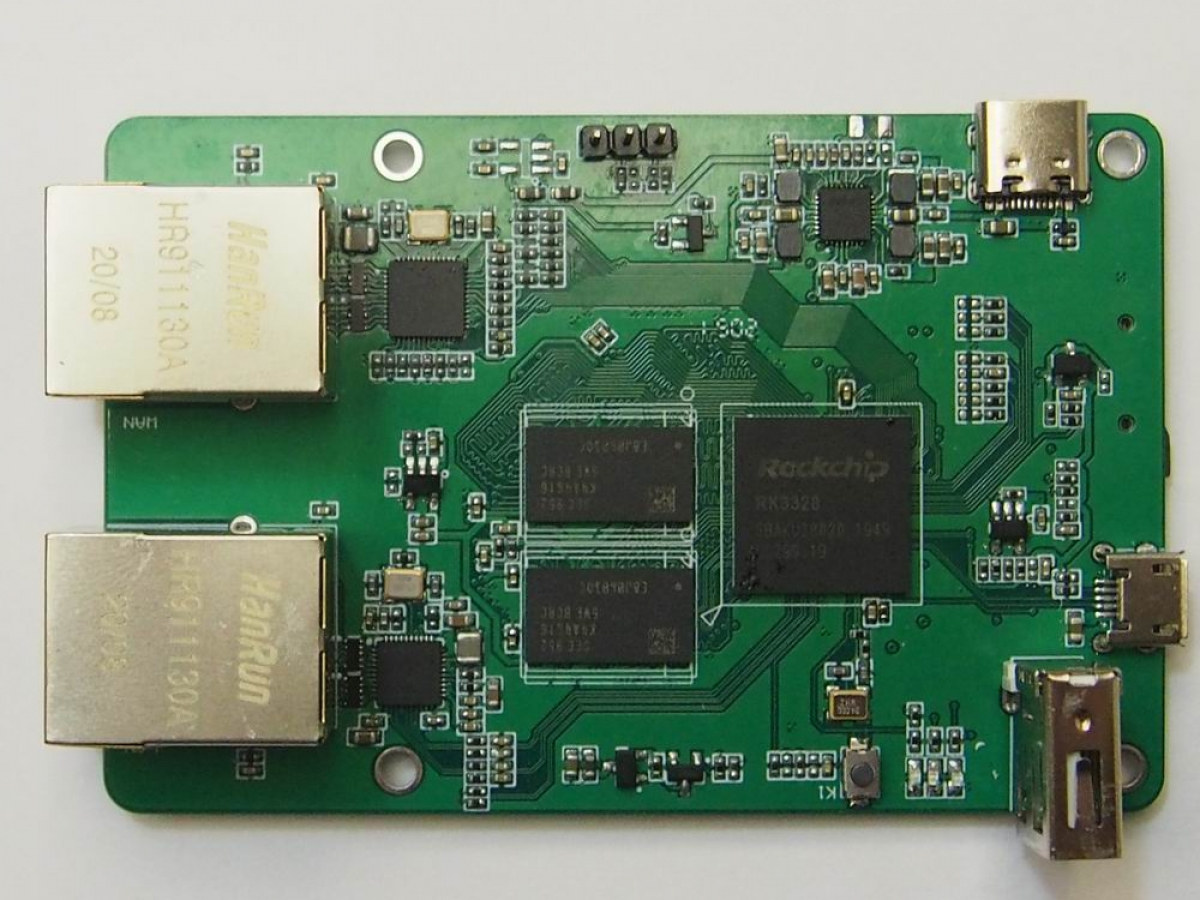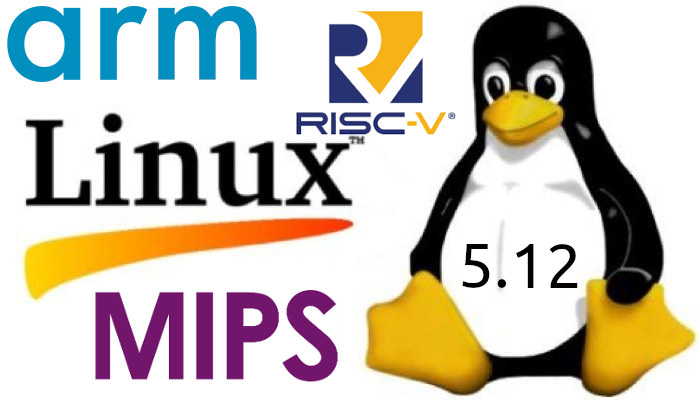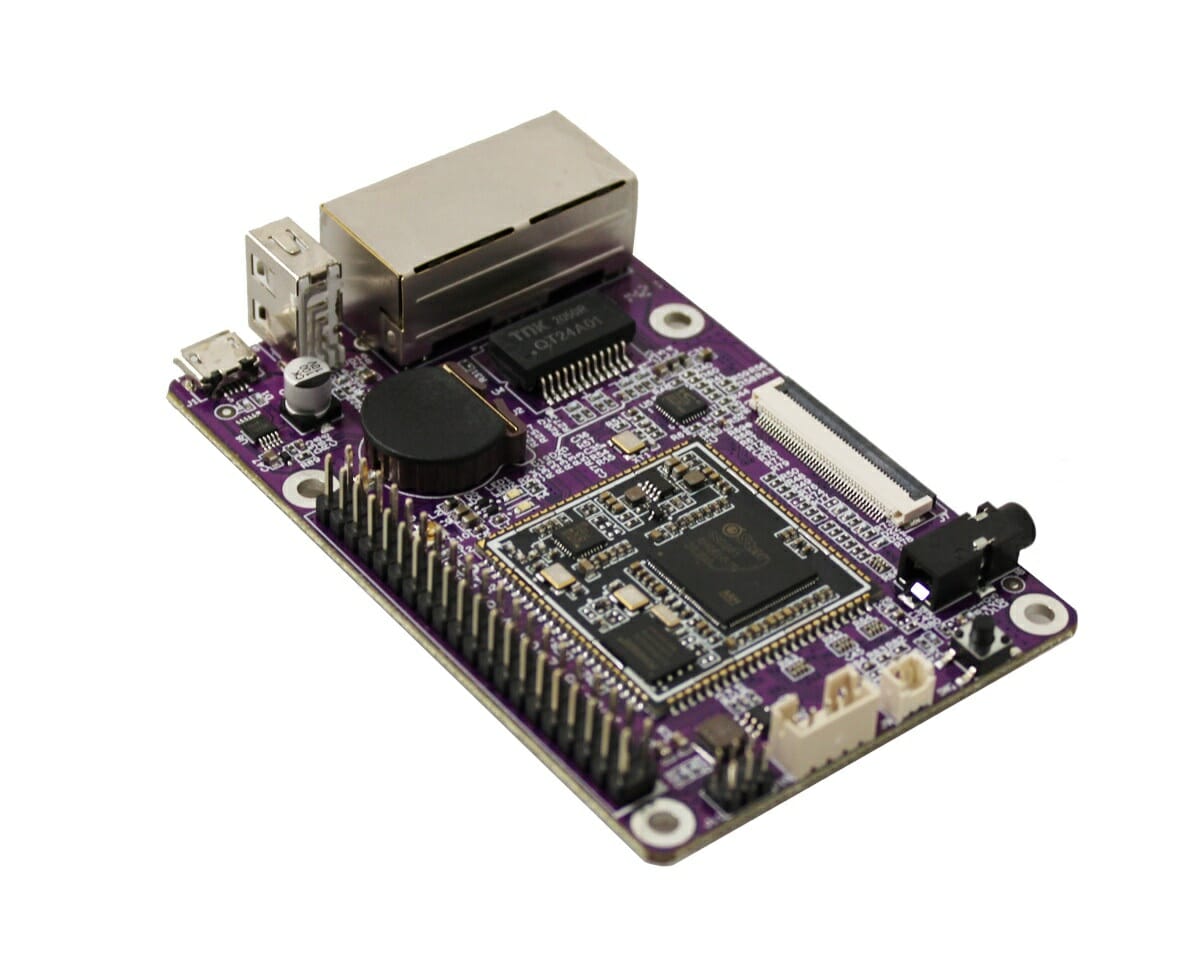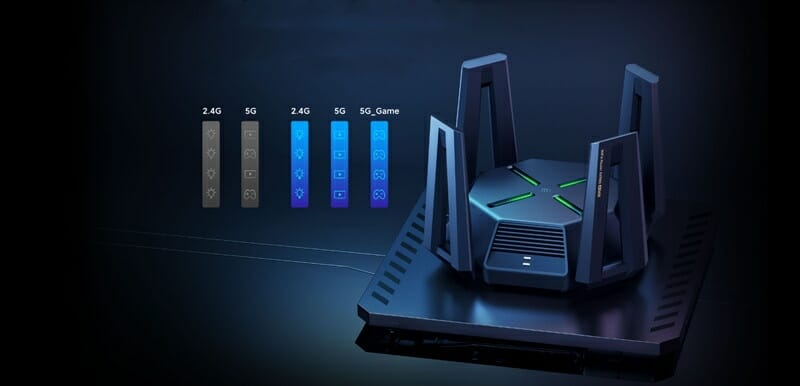OpenEmbed EdgeBox-RPi4 is an industrial controller based on Raspberry Pi Compute Module 4 fitted with up to 4GB RAM, 32GB eMMC flash, and a 2.4/5GHz WiFi & Bluetooth 5.0 wireless module. The controller exposes isolated RS485 & RS232 serial interfaces, as well as isolated digital inputs and outputs through a 16-pin terminal block, and provides Gigabit Ethernet and optional WiFI and 4G LTE connectivity options. EdgeBox-RPi4 specifications: SoM – Raspberry Pi Compute Module 4 (CM4) with Broadcom BCM2711 quad-core Cortex-A72 processor running up to 1.5GHz in either two default configurations: 1GB RAM, 8GB flash, no wireless module 4GB RAM, 32GB flash, dual-band WiFi 5 and Bluetooth 5 module Storage – M.2 socket for NVMe SSD up to 2TB (See expansion) I/O interfaces via 16-pin terminal block Industrial-grade isolated 2x DI (Digital Inputs), 2x DO (Digital Outputs) Industrial-grade isolated RS485 interface RS232 interface Connectivity Gigabit Ethernet RJ45 port Optional WiFI 5 […]
ClearFog CN9130 networking boards deliver 10GbE through a tiny Octeon TX2 module
SolidRun has designed and manufactured ClearFog networking boards ever since the introduction of the Marvell ARMADA 380/388-based ClearFog Pro in 2015. Since then, more powerful models have been launched including the ClearFog GT 8K based on Marvell ARMADA A8040 quad-core Cortex A72 processor with support for 2.5GbE and 10GbE, and the ClearFog CX LX2K equipped with a 16-core Cortex-A72 NXP capable of 100GbE networking. The Israeli company unveiled its first Octeon TX2-based design last fall with ClearFog CX CN9K, a full-featured networking SBC fitted with CEx7 CN9132 COM Express Type 7 module. But now the company has launched the more compact ClearFog CN9130 Pro/Base networking boards equipped with a tiny 50x30mm Octeon TX2 module still enabling 10GbE connectivity. SolidRun SOM 9130 system-on-module Specifications: SoC – Marvell OCTEON TX2 CN9130 quad-core Cortex A72 processor @ up to 2.2 GHz (commercial) or 2.0 GHz (industrial) System Memory – Up to 8GB DDR4 […]
QMiroPlus-201W – Arm router and Intel NAS in one device with Qualcomm IPQ4019 & Celeron J4125
QNAP QMiroPlus-201W is an unusual networked storage device that’s acting both as a 2.5GbE & WiFI 6 router and NAS combining Qualcomm IPQ4019 Arm SoC for the router functions, and an Intel Celeron J4125 quad-core Gemini Lake processor for the NAS functions. Usually, you’d get the choice of either an Arm or Intel processor, but here QNAP decided to use both to keep the same performance as having separate Arm-based router and Intel-based NAS, but in a much more compact form factor. QNAP QMiroPlus-201W hardware specifications: SoC/memory/internal storage For router SoC – Qualcomm IPQ4019 quad-core Arm Cortex A7 @ 716.8MHz Memory – 512MB DDR3 Internal Storage – 4MB SPI NOR Flash & 4GB eMMC flash For NAS SoC – Intel Celeron J4125 quad-core Gemini Lake processor @2.0 GHz Memory – 4GB DDR4 Internal Storage – 4GB eMMC flash Data Storage – 2x 2.5-inch SATA 3Gb/s (Compatible with 6Gb/s SSD/HDD) bay Networking […]
DR8072A embedded router board offers dual 2.5 GbE, WiFi 6 connectivity
We’ve previously found Qualcomm IPQ8072A quad-core Cortex-A53 networking processor in WPQ873 embedded SBC with support for WiFI 6, three GbE ports, one 2.5GbE port, and support for 5G M.2 modems. The design was adapted from Qualcomm HK09 reference design, and now another company, Wallys Communications, has launched another board based on HK09. DR8072A embedded router board is somewhat similar to WPQ873, but does come with two 2.5GbE ports instead of just one, one extra Gigabit Ethernet port, among other smaller changes. DR8072A specifications: SoC – Qualcomm Atheros IPQ8072A quad-core ARM 64 bit A53 @ 2.2GHz part of Qualcomm Networking Pro 600 Platform System Memory – 1x 512MB, DDR4 2,400 MHz 16-bit interface Storage – 256MB NAND flash, 8MB NOR flash Networking and Wireless Connectivity Ethernet 4x Gigabit Ethernet RJ45 ports 2x 2.5 Gbps Ethernet RJ45 ports WiFi On-board 4×4 2.4GHz MU-MIMO OFDMA 802.11b/g/n/ax, up to 1182 Mbps, max 17dBm per […]
Business card-sized dual GbE SBC runs OpenWrt on Rockchip RK3328 SoC
We’ve previously reported about at least two dual GbE router boards based on Rockchip RK3328 quad-core Cortex-A53 processor with namely NanoPi R2S and Orange Pi R1 Plus. But there’s now a third option with SmartHomeBoard Pi-R2S3328-B single board computer offered in a larger business card-sized format, equipped with 1GB DDR4, and booting OpenWrt from a MicroSD card. Debian and Ubuntu are also supported according to the manufacturer. Specifications: SoC – Rockchip RK3328 quad-core Cortex-A53 @ 1.5 GHz with Arm Mali-450MP2 System Memory – 1GB DDR4 RAM (Note some photos how 2x 512MB DDR3 instead) Storage – MicroSD Slot Connectivity -2x Gigabit Ethernet RJ45 ports, one native, one USB 3.0 to GbE USB – 1x USB Type-A host port, 1x micro USB OTG port, 1x USB Type-C port for power Debugging – 3-pin 2.54mm pitch header for serial console Misc – Reset button, Sys,WAN and LAN LED’s, Power Supply – 5V/2A […]
Linux 5.12 – Main Changes, Arm, MIPS and RISC-V Architectures
Linux 5.12 release was expected last Sunday, but Linus Torvalds decided to release one more release candidate, namely Linux 5.12-RC8, to “make sure things are all settled down“, so the latest Linux kernel is now expected this weekend. Tihs should not yield any significant changes, so we can check what’s new in Linux 5.12, notably with regards to Arm, MIPS, and RISC-V architectures often used in SoC’s found in embedded systems. Around two months ago, the release of Linux 5.11 added support for Intel’s software guard extensions (SGX) and Platform Monitoring Technology (PMT), AMD “Van Gogh” and “Dimgrey cavefish” graphics processors, MIPI I3C host controller interfaces, and much more. Some interesting changes in Linux 5.12 include: Added support for ACRN hypervisor designed for IoT & embedded devices Added support for Playstation DualSense & Nintendo 64 game controllers, as well as Nintendo 64 data cartridges Dynamic thermal power management via a […]
Dual Ethernet SigmaStar SSD201/SSD202 SBC supports 4-inch or 7-inch displays
SigmaStar SSD201/SSD202 are low-cost, highly integrated SoC’s with a dual Cortex-A7 processor, 64MB to 128MB on-chip RAM designed for Full HD smart displays, but we’ve also found SSD201 in a 4G LTE industrial gateway. There’s now a different type of board based on the SigmaStar processors with Wireless Tag/Industio IDO-SBC2D06-V1B-12W and IDO-SBC2D06-V1B-22W SBC’s powered respectively by SSD201 and SSD202, and both equipped with dual Ethernet and a connector for a 4-inch or 7-inch display. Specifications: System-on-Module (one or the other) IDO-SBC2D06-V1B-12W SBC – IDO-SOM2D01 module with SigmaStar SSD201 dual-core Cortex-A7 processor @ 1.2 GHz with 2D GPU, 64MB DDR2, 2Gbit SPI NAND flash IDO-SBC2D06-V1B-22W SBC – IDO-SOM2D01 module with SigmaStar SSD202 dual-core Cortex-A7 processor @ 1.2 GHz with 2D GPU, 128MB DDR3, 2Gbit SPI NAND flash Storage – MicroSD card slot Display – 4-lane MIPI DSI connector for 4-inch RGB565 display or 7-inch RGB888 display Audio – 2-pin Microphone connector […]
Xiaomi Mi AX9000 WiFi 6 Enhanced router supports up to 1000 clients
Xiaomi launched the Mi AX6000 WiFI 6 Enhanced router, not to be confused with WiFI 6E, at the beginning of the year. The router offers up to 4804Mbps link at 5 GHz, and up to 574Mbps with a 6+1 antenna configuration, as well as one 2.5GbE port, and several Gigabit Ethernet ports. But for people requiring even more bandwidth, Xiaomi Mi AX9000 WiFi 6 Enhanced router offers even more wireless throughput using three frequency bands with four antennas each, and up to 1148 Mbps at 2.4 GHz, up to 4804Mbps at 5.2GHz, and up to 2402Mbps at 5.8GHz, which the company refers to as the 5G_Game band. Xiaomi Mi AX9000 WiFI 6 Enhanced Edition router specifications: SoC – Qualcomm IPQ8072 quad-core Cortex-A53 processor @ 2.2 GHz with dual-core 1.7GHz NPU (network acceleration engine / processing unit) System Memory – 1GB RAM Connectivity Wired 1x 2.5GbE LAN/WAN port 1x Gigabit Ethernet […]


